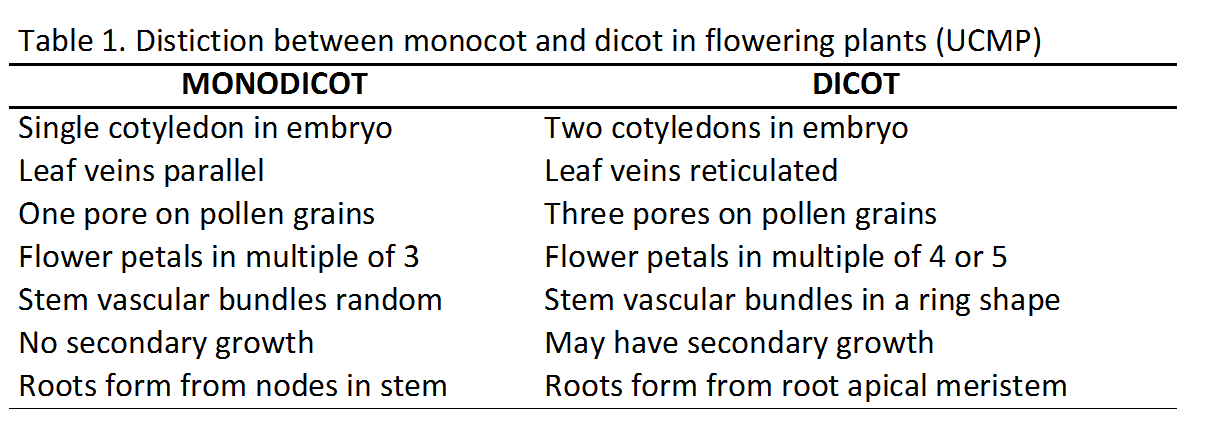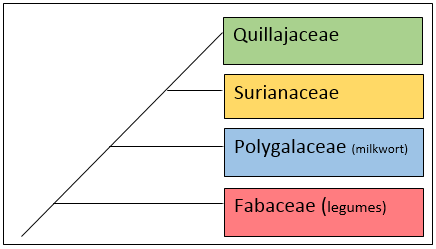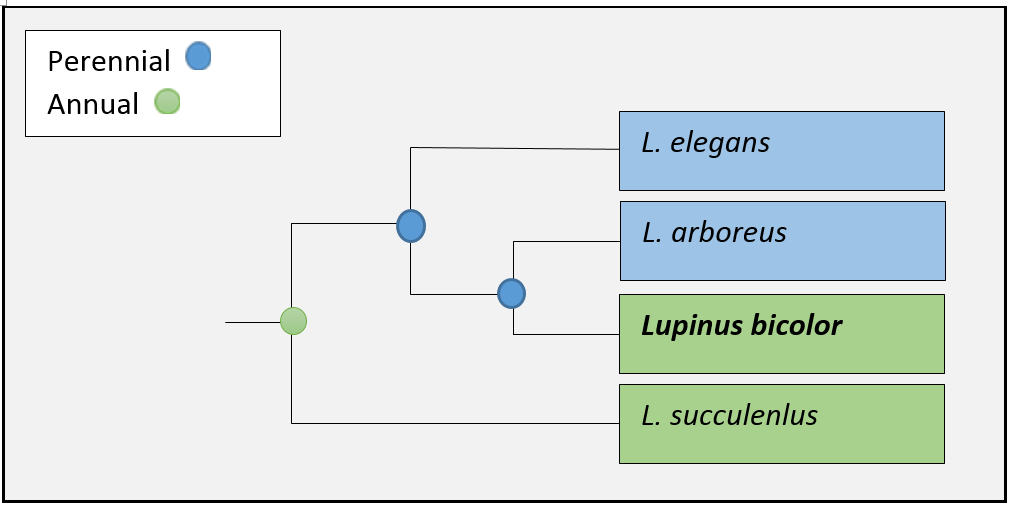Classification
Classifications of organisms are made based on groupings of
organisms with similar characteristics. Scientists have predicted
evolutionary changes in history and often create phylogentic
trees illistrating these predictions. There are
three major domains and each domain has subsets and it goes on
until the genus species is named. Listed, are each of the
classifications of Lupinus bicolor and the reasons or
characteristics of the grouping.
Domain: Eukaryote
L. bicolor is a multi-cellular organism containing mitochondria
and other organelles. The group contains fungus such as
Jelly Ear Mushroom, animals like the
Great Sea Horse, and plants like the
Purple Coneflower.
Kingdom: Plantae
This organismal group contains the land plants. The land plants
all have chloroplasts and photosynthesize to fix carbon into
sugar. An organism that shares a kindom with L. bicolor
but not a phylum are the ferns, an example would be the
Licorice Fern.
Phylum: Spermatophyta
This phylum consists of the seed plants and vascular tissues.
The L. bicolor contains xylem and phloem, a root system, stem,
leaves, and also produces sperm and egg to form seeds for its
reproduction. An example of
another organism in this phylum would be the
Sweet Orange as well as the
Pomegranate Tree.
Division: Magnoliophyta (flowering plants)
Not only do these plants produce seeds, but the method of seed
production in via a flowering structure as well as a fruit. The
same flower contains both the structures to produce egg and
sperm. The L. bicolor produces a fruit, specifically a pod of
seeds. Another member of Magnoliophyta is the
sunflower.
Class: Magnoliopsida
Magnoliopsida, or commonly called eudicot, refers to one of the
two classes of flowering plants, monocots and eudicots. Being a
dicot, such as the L. bicolor, is categorized by structural
characteristics, these characteristics are listed in Table 1
(UMPC 2013). Another example of a
Eudicot would be the
Silver Maple and the common
Blue Violet. Both of these organisms share the traits of
pollen structure, reticulated leaf veins and the number of
cotyledons of their embryo.

Order: Fabales
This order holds all the legumes, those with and without secondary
growth, meaning woody growth. Figure 1 shows the families of the Fabales
order. There are four listed, the Fabaceae (to which Lupinus bicolor
belongs) the Quillajaceae, the Polygalaceae, and the Surianaceae.
All except the Fabaceae have woody growth form. The Fabaceae is the
largest family with up to 20,000 species, with Polygalaceae being
the second largest containing up to 1,000 species
(Berry et al. 2013).

Figure 1. The tree above depicts an evolutionary hypothesis of the differentiation between the families of the Fabales order. The two largest families are hypothesized to have branched off first, with the smaller families branching later with less diversity.
Family: Fabaceae
The Fabaceae also known as Papilionaceae are a group of legumes
commonly referred to as the pea family. This group of plants have
been categorized by their non woody growth, uncommon of the dicots.
They are also grouped by their bilateral flowers, these resemble
butterfly wings, giving rise to the name “papilionaceae” off of the
Latin word papilio meaning butterfly (Berry
et al. 2013).
An ecologically valuable trait of the Fabaceae is their
symbiotic relationship with nitrogen
fixing bacteria, which increases the nitrogen content of soil
(Berry et al. 2013).
Genus: Lupinus L.
Species: Lupinus bicolor
There was an evolutionary separation of the L. bicolor from other
members of the genus Lupinus, these differences range from habitat
of the plant to physical characteristics such as size and form. One
specific separation of the L. bicolor is that it is an annual, a
trait that it shares with an old common ancestor of the Lupines.
Yet, as shown in Figure 2, this trait was lost for a while but
reemerged with L. bicolor and very close relatives. Another specific
characteristic of L. bicolor that differentiates it from some other
Lupines is the elevation at which it grows, as shown in Figure 1.
This species grows at elevations up to 2000 meters, while the L.
pachylobus, a close relative, can only grow at about 1000 meters
elevation (Drummond 2008).

Figure 2. A tree depicting the evolutionary relationship, in regard to the characteristic of being an annual or perennial, of various species of Lupines.
Go back to Home or move forward to Habitat